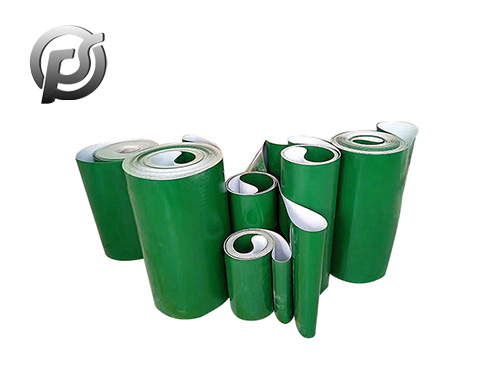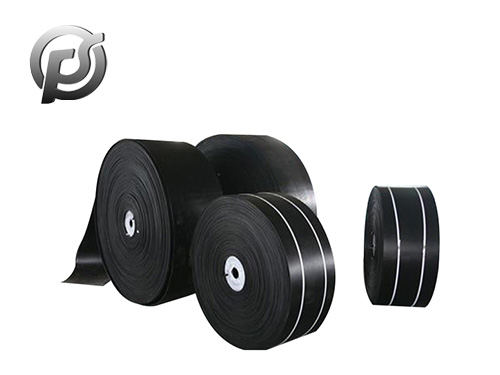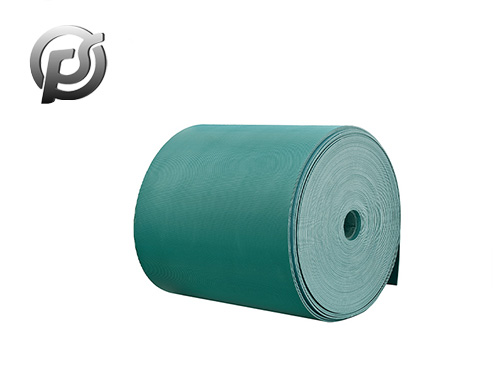Belt conveyor, with large throughput, simple structure, convenient maintenance, low cost and strong versatility, is widely used in many industrial sectors. Belt conveyor is mainly composed of frame,
conveyor belt, roller, roller, tensioning device, transmission device, etc.
Driving device:
The driving device of the belt conveyor is composed of a motor, a coupling or hydraulic coupler, a reducer, a driving drum, etc., and the belt conveyor with a inclined section should also be equipped with a brake or a backstop according to the need.
The function of the driving device is that the driving drum transmits gravity to the conveyor belt through friction to make it move and transport goods. Most belt conveyors are driven by single drum, but with the increasing of transportation volume and distance, the traction force of transmission drum is required to increase accordingly, so double drum and multi-drum drive appear. Each driving drum can be equipped with one or two driving units, and the end of the driving drum shaft is connected with the driving unit by a coupling.
The Y series cage motor is generally used to drive the motor, which has the advantages of small size, low cost, reliable operation, and easy to realize automatic control. When the power is small (≤37kW), it can be directly driven by the elastic coupling; When the power is large (45-315kW), it can be matched with hydraulic coupler to make the start smooth. In the case of large power (220-800kW), the winding motor can be used, which is easy to control, so that the long-distance belt conveyor starts smoothly, and solves the power balance problem of multi-drum drive.
Reducer __ The reducer of modern large belt conveyor in addition to the use of cylindrical gear transmission, in order to reduce the transverse size of the conveyor driving device, also often use bevel gear reducer.
For the mobile belt conveyor, in order to reduce the weight, the transmission device is mostly belt, chain or one open gear drive. In addition, cycloid reducer or electric roller can be used.
Electric roller is the motor and deceleration device placed in the driving roller, so the structure is compact, light weight, easy to arrange, safe operation, suitable for wet environment, corrosive conditions. Its disadvantage is that the heat dissipation condition of the motor is not good and the maintenance is inconvenient.
The driving drum transmits traction by means of friction between its surface and the conveyor belt. The driving drum has two kinds of smooth surface and rubber surface, and the rubber surface has flat rubber surface, hermite-shaped rubber surface (suitable for two-way operation), Diamond-shaped rubber surface (suitable for two-way operation), etc.
The rubber surface, especially the pattern rubber surface, can increase the friction coefficient, and the pattern rubber face also has a certain role in preventing the conveyor belt from running off. The smooth roller is used when the power is not big and the ambient humidity is small. When the environment is wet, large power, easy to slip should be used rubber roller.
When the conveyor belt goes around the drum, it will cause fatigue damage due to bending. Therefore, the diameter of the driving drum should not be too small. Drive drum diameter specifications are 500, 630, 800, 1000mm, can be selected according to the bandwidth.
Tensioning device:
The main tensioning devices are spiral type, trolley hammer type and vertical hammer type.
1) Spiral tensioning device
The tension of conveyor belt is adjusted by manually rotating screw. Its structure is simple and compact, but the size of the tension force is not easy to master, in the process of work, the tension force can not keep constant. Generally used in the length of less than 100m, small power on the conveyor, can be selected by the captain of 1%-1.5% tension stroke.
2) Trolley hammer tensioning device
It is suitable for conveyors with large length and power, especially in inclined conveyors.
3) Vertical hammer tensioning device
The space under the conveyor corridor can be used and arranged in the lower branch where the tape tension is minimum, thus reducing the weight of the hammer. Its disadvantage is to increase the number of redirection drums, increase the bending times of the conveyor belt, and the material is easy to fall between the conveyor belt and the drum and damage the conveyor belt.
Reversing device:
The belt conveyor uses reversing roller or reversing roller set to change the direction of movement of the conveyor belt.
The reversing drum can be used to change the direction of the conveyor belt at 180°, 90°, or < 45°. Generally, the reversing drum or the vertical hammer type tensioning drum arranged at the tail can reverse the conveyor belt to 180°. Above the vertical hammer tensioning device, the drum can reverse to 90°, and below 45°, it is generally used to increase the sealing Angle between the conveyor belt and the driving drum.
The diameter of the reversing drum is 250, 315, 400, 500, 630, 800, 1000mm, etc., which can be matched with the diameter of the driving drum when selected. When reversing to 180°, its diameter is smaller than that of the driving drum. When reversing to 90° or 45°, it can be reduced with the change Angle and appropriate to take 1-2 smaller.
Reversing idlers are a number of supporting idlers arranged along the required radius arc. They are used where the curvature radius of the conveyor belt is larger, or in the section of groove idlers, so that the conveyor belt can be thrown at the changing place to maintain the groove cross section.
When the conveyor belt passes through the convex arc, due to the influence of the groove Angle of the roller, the elongation of both sides of the conveyor belt is greater than that of the center. In order to reduce the stress of the belt, the radius of curvature of the convex arc should be as large as possible. Generally, the elongation of the fabric core is 0.8%.
 Optimizing Operations with PE Conveyor Belts: Durability, Efficiency, and Versatility
Optimizing Operations with PE Conveyor Belts: Durability, Efficiency, and Versatility
 Exploring the Efficiency and Versatility of Light Conveyor Belts
Exploring the Efficiency and Versatility of Light Conveyor Belts
 Polyester Conveyor Belts: Enhancing Efficiency and Reliability in Material Handling
Polyester Conveyor Belts: Enhancing Efficiency and Reliability in Material Handling